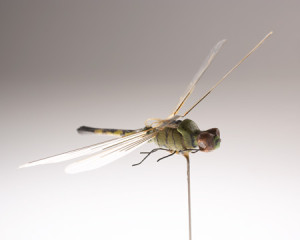 Everybody knows what the CIA is: Christians In Action, right? But what’s the CSI? Crime Scene Investigators? Cold-blooded Snakes and Iguanas?
Everybody knows what the CIA is: Christians In Action, right? But what’s the CSI? Crime Scene Investigators? Cold-blooded Snakes and Iguanas?
Sadly, no.
It is the CIA’s Center for the Study of Intelligence, the clandestine agency’s overt, academic arm. It produces material of great interest to historians and history buffs, as well as stuff that agent handlers and intelligence analysts read in hopes of improving their respective tradecraft.
One of the best products of CSI is its professional quarterly, Studies in Intelligence. It is written in-house for the benefit of Agency employees and their interagency partners, and is a rare magazine that is stamped with a security classification and that must be accounted for as a classified document. However, each issue, excerpts from Studies, usually dealing with espionage or intelligence history, are declassified and find there way to the Studies in Intelligence page maintained by CSI. Among the declassified excerpts are usually all of the book reviews from the relevant issue of Studies.
Along with the declassifiable bits of new issues of Studies, there are also now-it-can-be-told declassifications, like this one (.pdf) of a 1989 article by an early-1960s Saigon station chief. (They promise that “two compendiums” of declassified and unclassified Studies articles are coming Real Soon Now™). There were a lot of coups d’etat in the Republic of Vietnam in that period, including this one that most Vietnam scholars never heard of:
One “coup that wasn’t” led the Ambassador in August 1964 to order the departure of the legendary Lou Conein, the OSS veteran whose intimate relationships with most of the Vietnamese military hierarchy made him an invaluable resource during this period. Conein’s downfall in 1964 was precipitated by the unscheduled midnight move of a couple of US Army armored personnel carriers through the streets of Saigon, without the Vietnamese MP escort called for by standard practice. The APCs were unable to find their way to the pier where they were to be outloaded for movement north, and they pulled up outside the entrance of the Headquarter’s compound of the Vietnamese Navy, where Premier Khanh had secretly decided to spend the night. Khanh judged these vehicles to be precursors of a coup attempt; he alerted the US AmbassadOr, and he then fled by boat. The Ambassador alerted the Station Chief, who directed Conein to canvass his contacts to determine who might be “making the coup.” Conein called each of his friends, which included most of the members of the top military leadership council, inquiring whether they were mounting a coup. When the generals met the next morning and compared notes, they wrongly concluded that the CIA had been trying to stir up a change of government, leading the Ambassador to decide that Conein had outlived his usefulness to the Station.
Of course, while Studies in Intelligence is our favorite part of the CSI website, it’s far from all of it. For example, there are the Sherman Kent papers on analytical tradecraft, and a great deal of historical information, including complete books on such CIA developments as the U-2 and the A-12 Oxcart spyplanes. (Here’s a complete U-2 flight manual — from 1959 — declassified).
 And still further, apart from the Center for the Study or Intelligence, the CIA website has other cool stuff, like the CIA Museum’s Artifact of the Week. This week it was the Insectothopter, a micro-drone before drones were cool: 40 years ago, in fact, the CIA was flying a convincing “dragonfly” with a 90mm wingspan (right). It had limitations that prevented it from going operational. At least, at that time.
And still further, apart from the Center for the Study or Intelligence, the CIA website has other cool stuff, like the CIA Museum’s Artifact of the Week. This week it was the Insectothopter, a micro-drone before drones were cool: 40 years ago, in fact, the CIA was flying a convincing “dragonfly” with a 90mm wingspan (right). It had limitations that prevented it from going operational. At least, at that time.
It does make you wonder what they’ve got for technology now.

Kevin was a former Special Forces weapons man (MOS 18B, before the 18 series, 11B with Skill Qualification Indicator of S). His focus was on weapons: their history, effects and employment. He started WeaponsMan.com in 2011 and operated it until he passed away in 2017. His work is being preserved here at the request of his family.

One thought on “Wednesday Weapons Website of the Week: CIA CSI”
“Culinary Institute of America”?
Though it’s been more years than I care to think about; at one time I had access to their museum and (for a while) the time to spend perusing it rather than doing “work”.
I will always have mixed feeling about the Culinary Institute; but I have known some amazing people doing great things there.